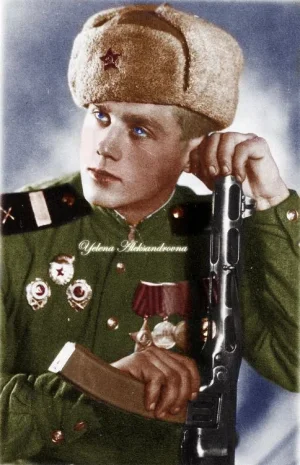- Joined
- Mar 28, 2017
- Messages
- 11,453
- Points
- 388
Operation Varsity' - Wesel, Germany - March 24, 1945

Injured US Paratroopers get treatment from members of the Army's Medical Corps.
The essential task of the XVIII US Airborne Corps was to seize the Diersfordterwald, a wooded ridge which overlooked the crossing places. The 6th and 17th Airborne Divisions were to land either side of this and deny its use to the enemy, thereby enabling the relieving ground forces to make swift progress beyond the Rhine.
The plans called for the dropping of two divisions from U.S. XVIII Airborne Corps, under Major General Matthew B. Ridgway, to capture key territory and to generally disrupt German defenses to aid the advance of Allied ground forces. The British 6th Airborne Division was ordered to capture the villages of Schnappenberg and Hamminkeln, clear part of the Diersfordter Wald (Diersfordt Forest) of German forces, and secure three bridges over the River Issel.
The U.S. 17th Airborne Division was to capture the village of Diersfordt and clear the rest of the Diersfordter Wald of any remaining German forces. The two divisions would hold the territory they had captured until relieved by advancing units of 21st Army Group, and then join in the general advance into northern Germany. (Wiki)
(Colourised by Royston Leonard)
Injured US Paratroopers get treatment from members of the Army's Medical Corps.
The essential task of the XVIII US Airborne Corps was to seize the Diersfordterwald, a wooded ridge which overlooked the crossing places. The 6th and 17th Airborne Divisions were to land either side of this and deny its use to the enemy, thereby enabling the relieving ground forces to make swift progress beyond the Rhine.
The plans called for the dropping of two divisions from U.S. XVIII Airborne Corps, under Major General Matthew B. Ridgway, to capture key territory and to generally disrupt German defenses to aid the advance of Allied ground forces. The British 6th Airborne Division was ordered to capture the villages of Schnappenberg and Hamminkeln, clear part of the Diersfordter Wald (Diersfordt Forest) of German forces, and secure three bridges over the River Issel.
The U.S. 17th Airborne Division was to capture the village of Diersfordt and clear the rest of the Diersfordter Wald of any remaining German forces. The two divisions would hold the territory they had captured until relieved by advancing units of 21st Army Group, and then join in the general advance into northern Germany. (Wiki)
(Colourised by Royston Leonard)





